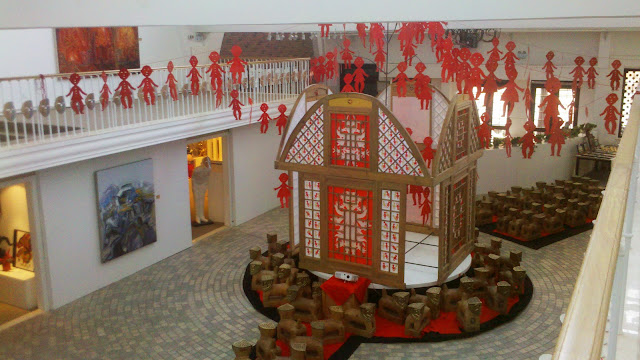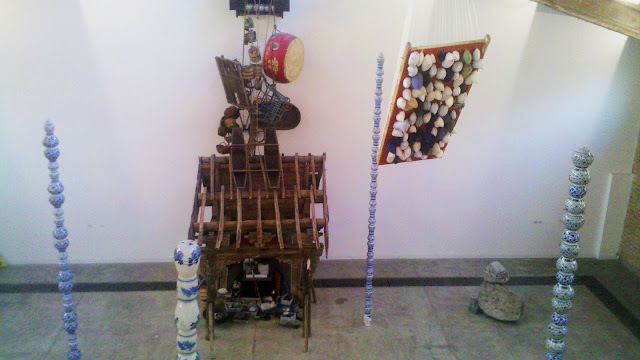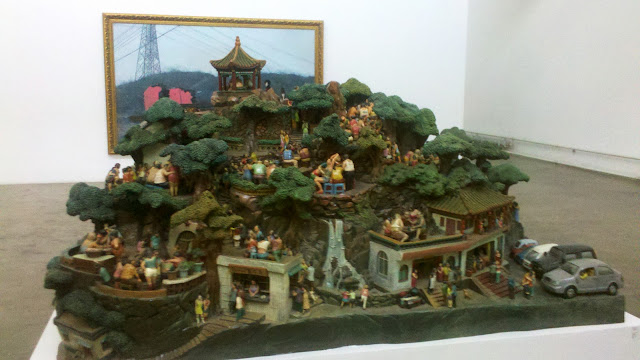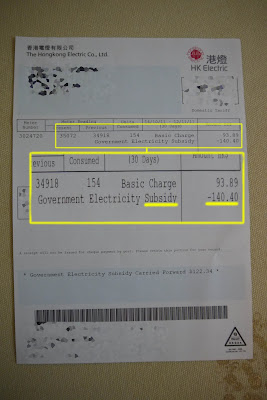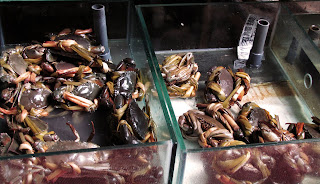February 13th, a young Mandarin-speaking girl dropped some dried noodles on a Hong Kong underground train. As eating and drinking is strictly banned on the spotless metro, a local Catonese speaker objected in bad Mandarin and hence started a quarrel. " That is what mainlanders are like" was perhaps the nastiest thing mentioned.
The whole incident was recorded with a mobile phone and went viral over youtube in days, provoking a controversial interview with Kong Qingdong, a scientist of the University of Beijing, who labelled Hong Kong's population as "dogs of British colonists". In reaction mainland Chinese were denoted to "locusts" swarming to Hong Kong to buy luxury gifts and giving birth to babies.
“Hong Kong people, we have endured enough in silence”
A man who identified himself over the phone as “Mr. Poon” and goes by “Yung Jhong” online said he organized the campaign. He said he was inspired to act after seeing news stories about mainland Chinese mothers who crossed the border to bear children in Hong Kong so that their offspring could obtain Hong Kong citizenship and the benefits that come along with it. Local authorities say that some 40,000 mainland Chinese mothers gave birth in Hong Kong hospitals last year, straining the local health-care system.
"People want to protect the city for their kids, protect the education and health-care system,” he said. “Hong Kongers are welcoming to everybody, even those from China, to come and visit and shop. But they have to follow our rules, which is why we feel like we have to say something"
To complete the picture, a recent published study shows that 16,6% of the population of Hong Kong seems themselves as Chinese whereas 38,6% insisted to be be Chinese only 3 years ago.
Hongkongnes believe in their way of doing things and do not want Beijing to send any more politicians to keep them in check. Their freedom of speech and press is not the only source of conflict though. The rapid increase of mainland women giving birth increased from 700 in 2000 up to 40.000 last year, making it more difficult for locals to get find housing or space in hospitals.
The Chinese claim though, that Hong Kong's success and fortune would have never been possible without their help.
During the chinese New-Year celebration is is said that 69% of all money spend on goods was payed for by mainlanders, adding up to 7,2 billion $.
The last delicacy is a newly founded "anti-locust-choir" who serenades tourists from mainland with their not so friendly anti-mainlander song, which is going viral in the city. It is said that the song polarises strongly and is only aimed at mainlander who try to "take resources from the city and give nothing in return."
 Hot on the heels of the anti-mainlander locust ad published in Hong Kong's Apple Daily comes Shanghai's very own xenophobic insect-based agitprop.
Hot on the heels of the anti-mainlander locust ad published in Hong Kong's Apple Daily comes Shanghai's very own xenophobic insect-based agitprop.
The copycat ad grabs readers with a statistic claiming that 4 billion RMB is spent each year to subsidize non-locals in Shanghai, and uses Shanghainese dialect to declare, "Shanghainese, we've had enough!"
Currently making the weibo rounds, themodified ad uses the same template of a locust perched atop a mountain while overlooking the terrorized city in question's skyline. For Shanghai, the Pudong skyline sits in the background, which means the locust would be perched atop the non-existent mountains of Huangpu district.
Our full translation of the Shanghainese locust weibo post:
Do you want to spend 4 billion RMB every year to subsidize the population of outsiders?
And for comparison's sake, here's our full translation of the anti-mainlander locust ad that appeared in Hong Kong's Apple Daily:
Do you want Hong Kong to spend $1 million HKD every 18 minutes to raise a child without a single Hongkongnese parent?
The last delicacy is a newly founded "anti-locust-choir" who serenades tourists from mainland with their not so friendly anti-mainlander song, which is going viral in the city. It is said that the song polarises strongly and is only aimed at mainlander who try to "take resources from the city and give nothing in return."
"Bad gets worse: Shanghai's version of Hong Kong's locust add"

The copycat ad grabs readers with a statistic claiming that 4 billion RMB is spent each year to subsidize non-locals in Shanghai, and uses Shanghainese dialect to declare, "Shanghainese, we've had enough!"
Currently making the weibo rounds, themodified ad uses the same template of a locust perched atop a mountain while overlooking the terrorized city in question's skyline. For Shanghai, the Pudong skyline sits in the background, which means the locust would be perched atop the non-existent mountains of Huangpu district.
Our full translation of the Shanghainese locust weibo post:
Do you want to spend 4 billion RMB every year to subsidize the population of outsiders?
Shanghainese, we've had enough!
Because you've come for the gold rush, we have to receive 17,566,700outsiders.
Because you want to settle down, we have to receive 380,000 of the outsider laborers' children.
Because you want to look after your parents, we have to receive 159,500 outsiders who are elderly.
BUT!
We have to endure you coming and ruining our culture.
We have to endure your fellow villagers criticizing us.
We have to endure your fellow villagers' uncivilized behavior.
[We] strongly request that the government changes the law,
Stop the endless influx of outsiders entering Shanghai!
And for comparison's sake, here's our full translation of the anti-mainlander locust ad that appeared in Hong Kong's Apple Daily:
Do you want Hong Kong to spend $1 million HKD every 18 minutes to raise a child without a single Hongkongnese parent?
People of Hong Kong, we've had enough!
Because we know you have milk powder that's poisonous, we understand why you grab all our milk powder,
Because we know you have no freedom, we host you when you visit Hong Kong on your own,
Because we know your educational system is backward, so we share our educational resources with you,
Because you can't read Correct Chinese (traditional Chinese), so we use Defective Chinese (simplified Chinese).
Please respect local culture if you come to Hong Kong, otherwise it'll be your fault when Hong Kong is finished.
[We] strongly request that the government changes the Basic Law!
Stop the limitless entry of mainland pregnant women from invading Hong Kong!
It goes without saying that both sides are right in their opinion but should just sit down and talk it out. I am keen to see how the situation develops and if Hong Kong will stay a legit SAR.




